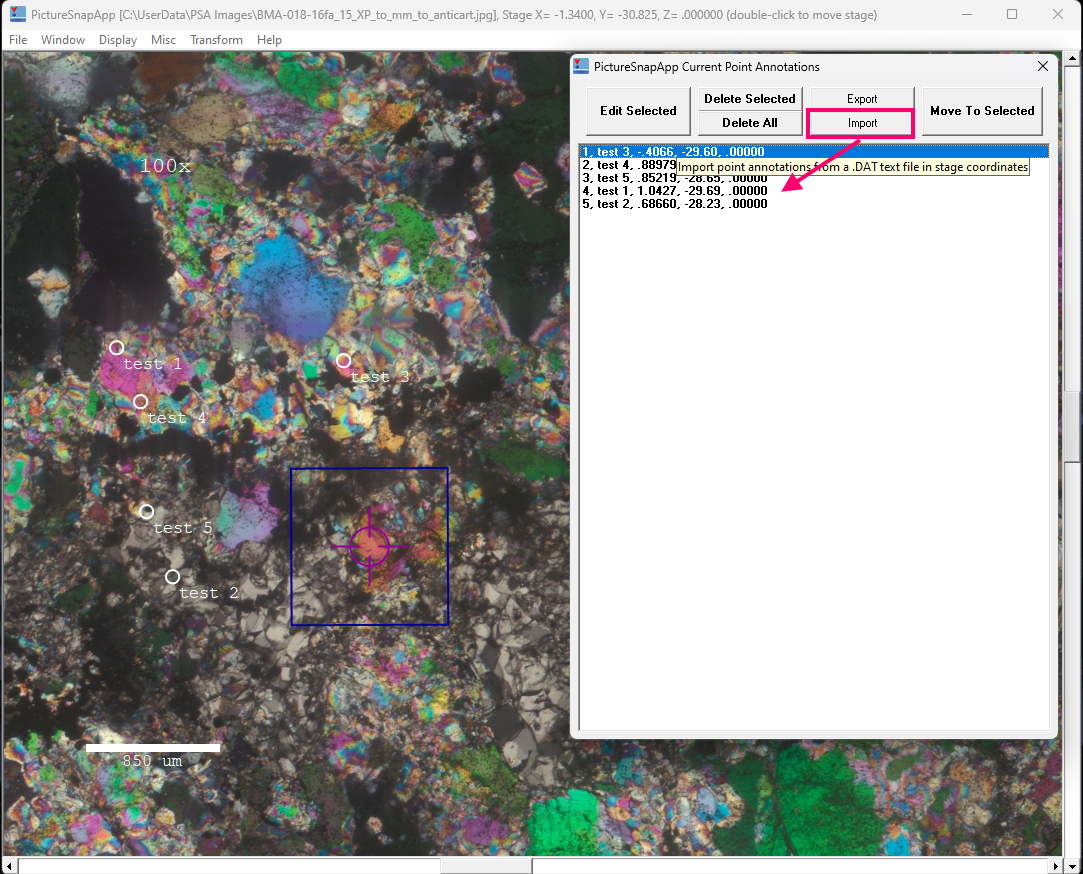Owen Neill suggested a new feature that we have now implemented in v. 1.8.8 of PictureSnapApp to allow the user to import point annotations from another source:

Previously you could only export point annotations in stage coordinates to a tab delimited text file, but now you can also import point annotations (in stage coordinates) from a tab delimited text file (using the same format).
The file format can be seen by exporting some point annotations to a text file (<filename>.DAT). For example:
1 "test 1" 1.04269 -29.693 .000000
2 "test 2" .686597 -28.230 .000000
Then opening the exported data file in any text editor such as NotePad.
The format is very simple: the first column is the index of the point annotation (it is ignored when importing), the second column is the text annotation in double quotes, the next three columns are the X, Y and Z stage coordinates. The columns must be tab separated (delimited).
If the image is calibrated only using two fiducial points, the Z stage coordinate will be the default Z stage position. If the image is calibrated to three fiducial points, the z stage position will be interpolated based on the sample tilt.
Note that all annotations are stored in the .ACQ file in image coordinates (twips), but the stage coordinates will be updated if the image calibration is modified.
As usual you can update to v. 1.8.8 PictureSnapApp from the Help menu for free.